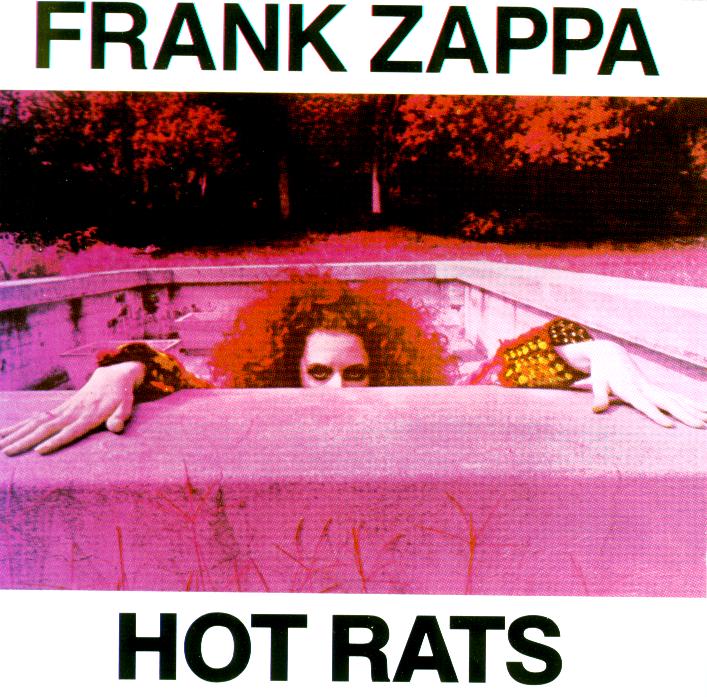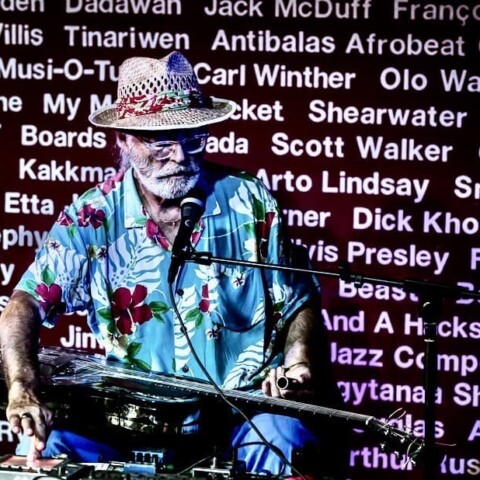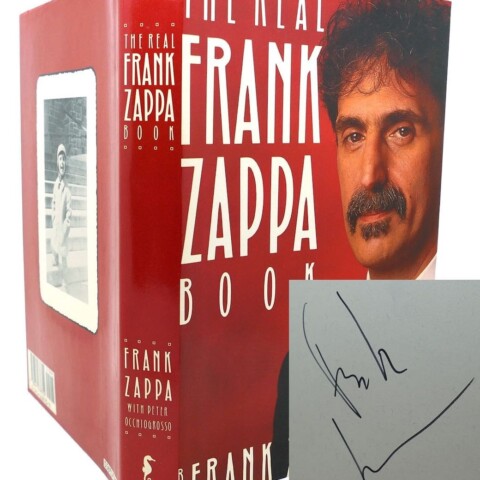With Universal reissuing remastered versions of Frank Zappa’s enormous catalogue, Gary Steel takes up the challenge of reviewing all of FZ’s genius album creations, one by one, and giving them a unique ‘Zappa Rating’. Today’s selection: Burnt Weeny Sandwich.
Frank Zappa – Burnt Weeny Sandwich (Zappa Records/Universal) #9
 BY DECEMBER OF 1969, when Burnt Weeny Sandwich hit the record racks, Frank Zappa had broken up his group, the Mothers Of Invention, citing the depressing experience of touring with legendary jazz bandleader Duke Ellington, and having to watch him plead with tour management for a $10 advance.
BY DECEMBER OF 1969, when Burnt Weeny Sandwich hit the record racks, Frank Zappa had broken up his group, the Mothers Of Invention, citing the depressing experience of touring with legendary jazz bandleader Duke Ellington, and having to watch him plead with tour management for a $10 advance.
Now solo – for a while at least – he put together a couple albums of unreleased studio and live performances/material featuring his former group, Burnt Weeny Sandwich and Weasels Ripped My Flesh (released early 1970). These may have been a kind of holding pattern for Zappa, but they were so expertly crafted and segued, and the material so damn fine, that this woo-some twosome are, in fact, right up there with his best.
Burnt Weeny Sandwich features Cal Schenkel collage cover artwork that’s as odd as the record’s title, and the music is the closest Zappa ever got to progressive rock. In fact, I think of the album as a key piece in the progressive rock puzzle: we already know that Zappa was influential to psychedelic-era Beatles, but his instrumental rigour and the classical influence in his music made a big fan of people like Keith Emerson, who even recorded a Zappa piece while still a member of The Nice. [Emerson, of course, went on to lead those titans of progressive rock, ELP]. 1969 was the year progressive rock bloomed in the UK, but only King Crimson’s In The Court Of The Crimson King is really evidence of that; groups like Yes and Genesis didn’t evolve sufficiently until the early ‘70s to claim that musical territory.
Zappa, however, wasn’t particularly interested in European composers who had been in the their graves for 200 years – his biggest influence (apart from blues and doo-wop) was the 20th century classical music of Varese, Webern and Stravinsky, so his version of progressive rock (what happens when you put ‘classical’ with rock instrumentation and electricity) wasn’t at all baroque, and you couldn’t imagine sitting down for a nice cup of tea while listening to it.
On the extended ‘King Kong’ (Uncle Meat), Zappa had taught himself how to effectively and creatively sandwich live and studio material together – sometimes stitching multiple sound sources into the fabric of one song – and on Burnt Weeny Sandwich and (particularly) Weasels Ripped My Flesh, he really plays around in his editing suite.
 The more substantial material that comprises most of Burnt Weeny Sandwich is bookended by two commercial pop songs, white port and lemon juice jingle ‘WPLJ’ and a cover of ‘Valarie’ by Jackie & the Starlights. They maintain a nice balance of affectionate, nostalgic and moronic, and are performed without any trace of a sneer.
The more substantial material that comprises most of Burnt Weeny Sandwich is bookended by two commercial pop songs, white port and lemon juice jingle ‘WPLJ’ and a cover of ‘Valarie’ by Jackie & the Starlights. They maintain a nice balance of affectionate, nostalgic and moronic, and are performed without any trace of a sneer.
After its cheery intro, we’re straight into 20-odd minutes of unbroken, segued music. Apparently the 40 seconds of ‘Igor’s Boogie’ was written for Stravinsky, while ‘Overture To A Holiday In Berlin’ (all 1:29 of it) breaks out into a demented strip-club sax with harpsichord accompaniment; this is quickly replaced by intentionally out-of-tune bowed cello and metrically precise (sped-up?) xylophone, which breaks off into a spatter of percussion effects to allow a slow fade-in of ‘Theme From Burnt Weeny Sandwich’, a four-minute wah-wah-laced guitar solo with percussion sprinkles on top. The guitar increases in volume, then fades away, leaving the percussion to bang and rattle on. ‘Igor’s Boogie, Phase 2’ is 35 seconds of honking horns that only makes sense when you hear it, and then it’s into the brilliant centrepiece of the first side (of the vinyl), ‘Holiday In Berlin, Full-Blown’. This six-minute track goes through too many changes to effectively describe, but it boasts a gorgeous tune featuring harmonised horns and keys and that double drum sound of late period Mothers… and then he goes and takes the mickey out of it by including the most hilariously over-ripe, drunken supper-club sax you’ve ever heard, then a passage full of honking horns and sped up xylophone and military drumming and a great wah-wah guitar solo in which Zappa really explores the low notes together with sustain and feedback… See what I mean? And the first part trails away with 2:45 of unaccompanied acoustic guitar and harpsichord.
The second part is reserved for the monster 21:52 of ‘The Little House I Used To Live In’, which starts out with a quiet piano passage, before bursting in with a selection of written and improvised sections. Zappa does the unthinkable at one point, and commands the organ, seemingly intent on simply making as much noise on it as possible; and there’s also a Sugarcane Harris violin solo, together with so many changes of tempo and virtuosic touches that it shows you where the Mahavishnu Orchestra of the early ‘70s copped some of its moves. This may be jazz-rock fusion, of a kind, but it’s not the bloodless kind: this music is physical and gritty and unpredictable and relying on musical invention rather than virtuosity for the sake of it. Large parts of this piece are clearly live, but late in the day there’s a highly arranged studio section that’s pure modern chamber music, with harps and bassoons and flutes. Anyone else would have concluded the piece with this section, but Zappa just had to add his crazy live-on-stage organ freak-out to the end.
It’s a head-spinning experience, particularly when the piece concludes with audio verite from a concert where hippies in the audience are screaming at security men to “take off your uniform before it’s too late man!”, wherein Zappa responds with the classic line: “Everybody in this room is wearing a uniform and don’t kid yourself.”
 Burnt Weeny Sandwich probably falls off the all-time Zappa Top 10 only because the audio is a bit rough, but for those who like it a little lo-fi, and anyone else who likes the idea of an adventure in music, it’s an incredible, underrated gem.
Burnt Weeny Sandwich probably falls off the all-time Zappa Top 10 only because the audio is a bit rough, but for those who like it a little lo-fi, and anyone else who likes the idea of an adventure in music, it’s an incredible, underrated gem.
Bob Ludwig has remastered the album from the original analogue tapes, and it does have more dynamic than the Ryko version, but its biggest limitation sonically are its source tapes.
Like all the other Universal CD remasters, attention has been paid to getting the cover looking good, and it folds out into a mini poster of the cover artwork. GARY STEEL
Zappa Rating
Music = 4.5/5
Sound = 3/5
Recommendation: There are sonic improvements here, but the Ryko version is perfectly okay.















